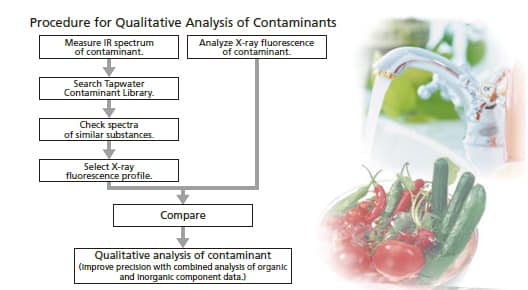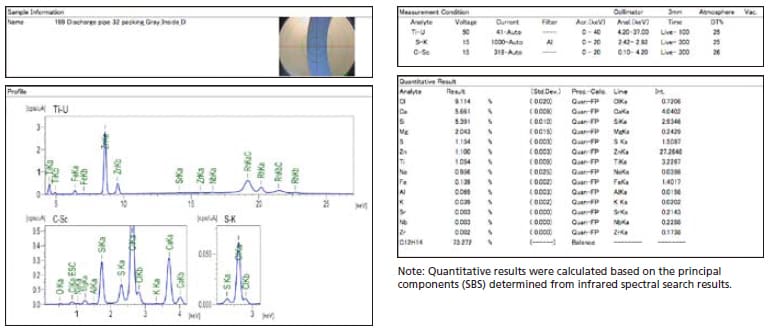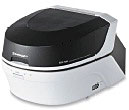Tap water Contaminant Search System
The Tapwater contaminant system is a comprehensive search system that incorporates both techniques.
Inquiries from organizations involved in public water supply systems reflect a wide range of issues, such as objectionable mold, chlorine, or other tastes or odors; trihalomethane or other environmental pollutants; or the inclusion of other contaminants. Possible substances causing contamination of and include the various rubber and metal gaskets, packings, and sealing materials used in public water systems, minerals, and microorganisms. A major cause of contaminants is the aging, servicing, or installation of revolves around infrastructure as well as the fixtures and other equipment involved in delivering the water. While eliminating these causes is difficult, identifying the contaminants as quickly as possible helps to ease the concerns of users. Infrared spectrometry and X-ray fluorescence spectrometry provide an effective way to identify contaminants. The Tapwater contaminant system is a comprehensive search system that incorporates both techniques.

Features of Search System
- Shimadzu's proprietary and state-of-the-art contaminant library, compiled specifically for public drinking water, was prepared with cooperation from organizations in the public water supply industry.
- Includes information from actual contaminant samples and commercially-available service parts used in public water systems.
- Includes both an infrared spectral library and X-ray fluorescence profiles (in PDF file format), which significantly improves precision of contaminant searches.
Applicable Fields
- Various organizations involved in water supply systems
- Petroleum and chemistry
- Foods
- Contract analysis
Example of Infrared Spectral Search Results and Corresponding X-Ray Fluorescence Profile for a Contaminant
The following shows an example of infrared spectral search results and qualitative/quantitative EDX information for matching substances in search results. The contaminant was discovered in a public water system. The Tapwater Contaminant Library was utilized to determine the contaminant and corresponding profile.
Infrared Spectral Search Results

X-Ray Fluorescence Profile of Corresponding Substance

Infrared Spectral Library
| Instrument used | Shimadzu Fourier Transform Infrared Spectrophotometer (IRPrestige-21/IRAffinity-1) |
| Measurement method | Single-reflection ATR (prism: Ge or diamond/ZnSe) |
| Number of spectra | 217 spectra (For rubber, spectra are included for both interior and exterior) |
| Information included | Material names, colors, shapes, hardness, etc. |
| Prism selection criteria | Ge - Enables measurement of samples with high refractive indices (such as black rubber). Absorption peak is smaller than diamond/ZnSe. Diamond/ZnSe - Less prone to scratching and provides larger absorption peaks than Ge. Cannot measure samples with high refractive indices (such as black rubber). |
X-Ray Fluorescence Profile Library
| Instrument used | Shimadzu Energy Dispersive X-Ray Fluorescence Spectrometer |
| Detectable elements | From C to U |
| Profile count | 217 profiles |
| Information included | Qualitative results and FP method quantitative results (Uses FTIR qualitative results for principal components.) |




